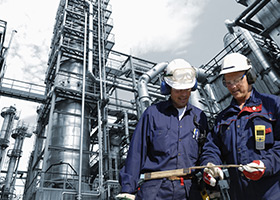Noise is an acoustic disturbance effect, natural or artificial, that have a negative effect with listener’s activity.
Parameters to describe the noise are:
Sound pressure: is the difference between the pressure caused by a sound wave and the ambient pressure of the medium the sound wave is passing through. it is measured in Pascal [Pa].
Frequency: the number of times that a periodic function or vibration occurs or repeats itself in a specified time, often 1 second – cycles per second. It is usually measured in Hertz [Hz].
- ƒ< 20 Hz => infrasound
- 20 Hz < ƒ < 20000 Hz => human perception
- ƒ >20000 Hz => ultrasound
Sound intensity: it is measured in Decibel [dB], a logarithmic unit used to describe a ratio between the measured level and a reference or threshold level of 0 dB.
Examples of sound pressure, sound level and human evaluation.
| Sound pressure [Pa] | Sound level [dB(A)] | Sound source | Human evaluation |
| 20 µPa | 0 | Threshold level of reference | Relaxed |
| 100 µPa | 10 | Threshold level of audibility | |
| 20 | Leaves rustle, murmur | ||
| 1 mPa | 30 | Library | |
| 10 mPa | 50 | Normal conversation | Calm |
| 60 | Office | ||
| 100 mPa | 70 | Car transit | loud |
| 80 | Traffic | ||
| 1 Pa | 90 | Assembly line | Very loud |
| 100 | Discotheque | ||
| 10 Pa | 110 | Pneumatic drill | |
| 20 Pa | 130 | Bore | Intolerable / pain threshold |
| 100 Pa | 140-150 | Supersonic jet
(at 25 m of distance) |
Intolerable / eardrum break |
How can we evaluate the noise?
A sound wave is associated with pressure and frequency, so, even human ear reaction is in function with both these two physical quantity. Usually human ear is more sensible with high frequency than low frequency; moreover, people ear in different way between them.
Weighting filter are used to define threshold level of audibility. There are four weighting filters:
- A-weightingfilters cover the full audio range, 20 Hz to 20 kHz, the filter ‘shape’ is similar to the response of the human ear at the lower sound levels. The preferred convention is to write LA = x dB, however dBA and dB(A) are often used, as are LAeq, LAmax
- B-weighting, no longer in common use, was initially developed to cover the mid-range loudness scale. It was more ‘critical’ of lower frequencies than the A-weighting network which probably accounts for it’s use by the motor industry for many years after it’s decline in general popularity.
- C-weightingis a standard frequency weighting for sound level meters, commonly used for high level measurements and peak sound pressure levels. Approximately follows the 100 phon curve – also written as dB(C) or dBC. The A-weighting curve is used extensively for general purpose noise measurements but the C-weighting correlates better with the human response to high noise levels.
- D-weighting: a sound level meter frequency weighting developed for measuring aircraft noise especially non-bypass military engines. No longer in common use since IEC 61672 2003. More recent ISO standards recommend A-weighting for commercial aircraft noise.


